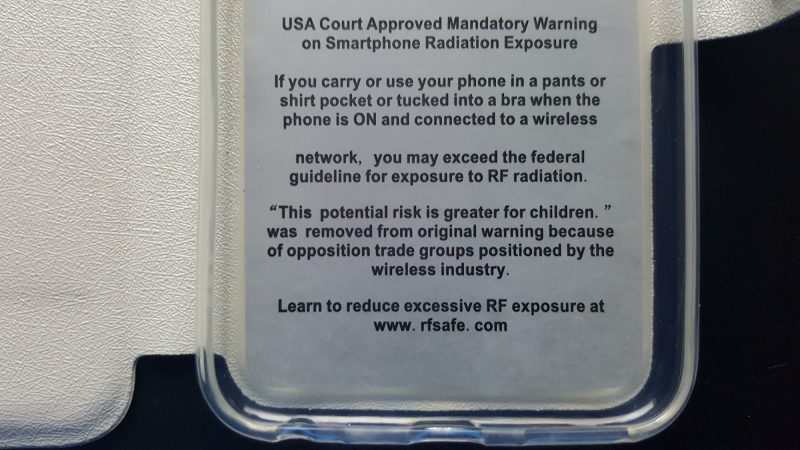CTIA, a wireless industry trade association, had brought on Theodore Olson of Gibson, Dunn & Crutcher to bring a First Amendment challenge to the local cellphone radiation right to know law. Olson’s heavyweight reputation as U.S. solicitor general in George W. Bush’s administration didn’t go very far with Olson representing the wireless industry’s loss of common sense by enjoining Harvard law professor Lawrence Lessig representing the city’s right to ensure the public is informed about cell phone radiation exposure.
The Ninth Circuit on Friday 4-21-2017 declined to halt enforcement of a Berkeley, California, ordinance that requires cellphone retailers to warn consumers about radiation risks, saying the law withstands First Amendment scrutiny since it’s related to a substantial government interest of protecting consumers’ health and safety.
The CTIA claims that Berkeley’s “right to know” ordinance to warn consumers about cell phone radiation exposure in retail stores violates free speech. Berkeley’s unanimous decision that the required cell phone radiation warnings are guidelines directly from the cell-phone manuals, which simply reminds consumers that many phone require operation of a cell phone no closer than 5mm to body or the phone may exceed federal guidelines for exposure to radio-frequency radiation.
With such a strong legal precedent set in higher court ruling now, Berkeley has paved the way for similar ordinances to pass by other communities across America. In an emailed statement, Berkeley City Attorney Zach Cowan wrote that the law “was carefully crafted to comply with all constitutional issues, and we’re very pleased that the Ninth Circuit has agreed.”
Your Right to Know: The iPhone 7’s instructions say, “Carry iPhone at least 5 mm away from your body to ensure exposure levels remain at or below the as-tested levels.” The iPhone 5 instructions suggest at least 10 mm.
While the Samsung Galaxy S8 has a much lower SAR level than an iPhone 7, it also requires a 15 mm distance for body worn usage to attain such a low SAR rating. That is 10 mm more distance than the iPhone 7 — which causes a great deal of confusion over how safe one phone is over the other.
“The cellphone manufacturers want you to keep a minimum distance away from your body and you should find out what that distance is,” Moskowitz said. “If you keep the device by your body you will exceed the safety limits provided by the FCC.”
That message is what Berkeley officials say is the purpose behind the city’s “Right to Know” ordinance: To educate the public that information on radiation exposure from mobile devices can be found in phone, tablet and laptop manuals.
“We’re just saying let’s take the information that’s buried in your cellphone and buried in the manual, and put it where someone might have a chance to read it,” said Berkeley councilman Kriss Worthington, who co-sponsored the ordinance with former councilman Max Anderson.
The city council voted unanimously to pass the ordinance in May 2015.
This is not the first time CTIA has sued a Bay Area city seeking to force more disclosures about RF energy exposure from Smartphones. In 2010, the organization sued the city and county of San Francisco to block a similar ordinance. CTIA prevailed in that matter in September 2012.
“The cellphone industry is using the same playbook that the tobacco industry used successfully for decades. They’ve war-gamed the science,” Moskowitz said.
HOW TO ProTECT YOURSELF:
Beside keeping the phone from directly touching your head, cellphone safety advocates suggest the following precautions for minimizing exposure to RF radiation:
1. Use air-tube heatset not a wired or Bluetooth headset
2. Turn the device off or set it to Airplane Mode on your nightstand when you sleep
3. Put the device in a purse or backpack instead of carrying it in a pocket
4. Be especially careful when cell signals are low, because cellphones emits more RF radiation when they’re trying to communicate with a cell tower


